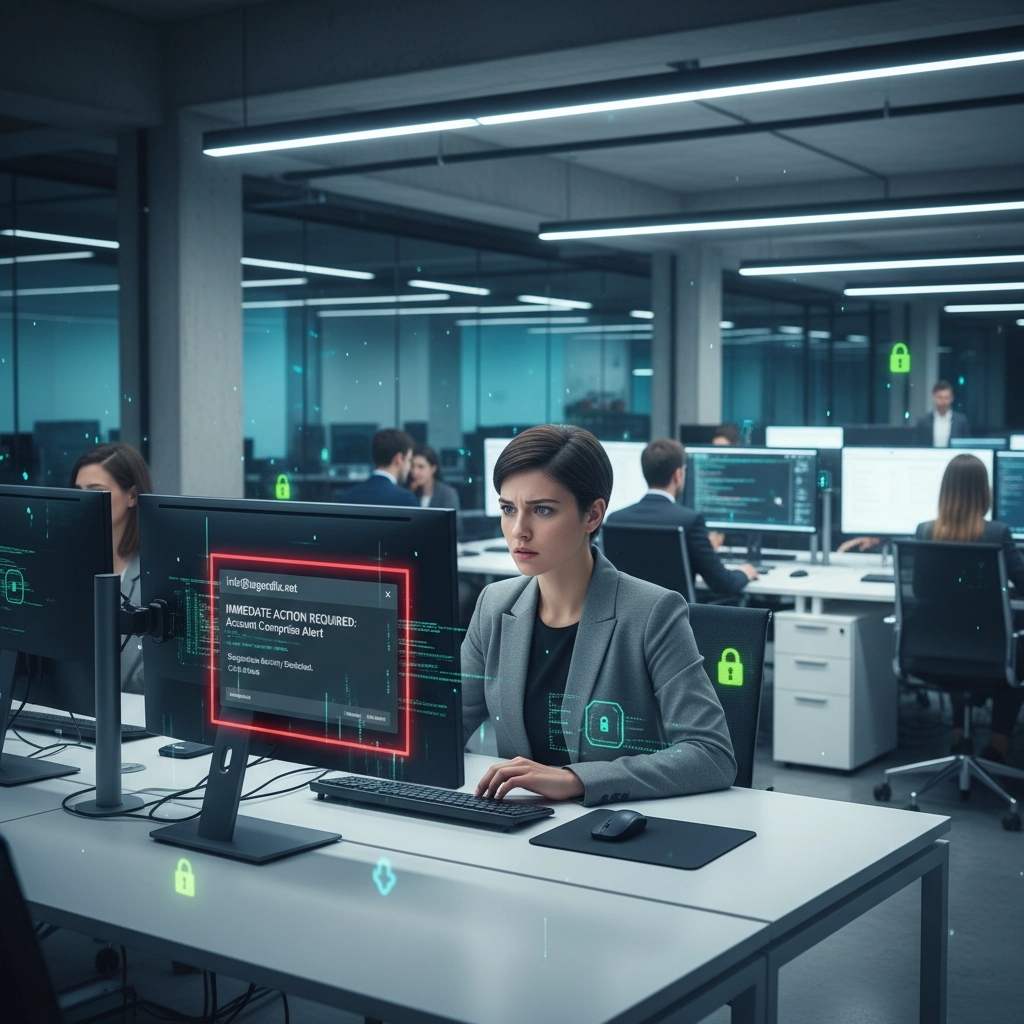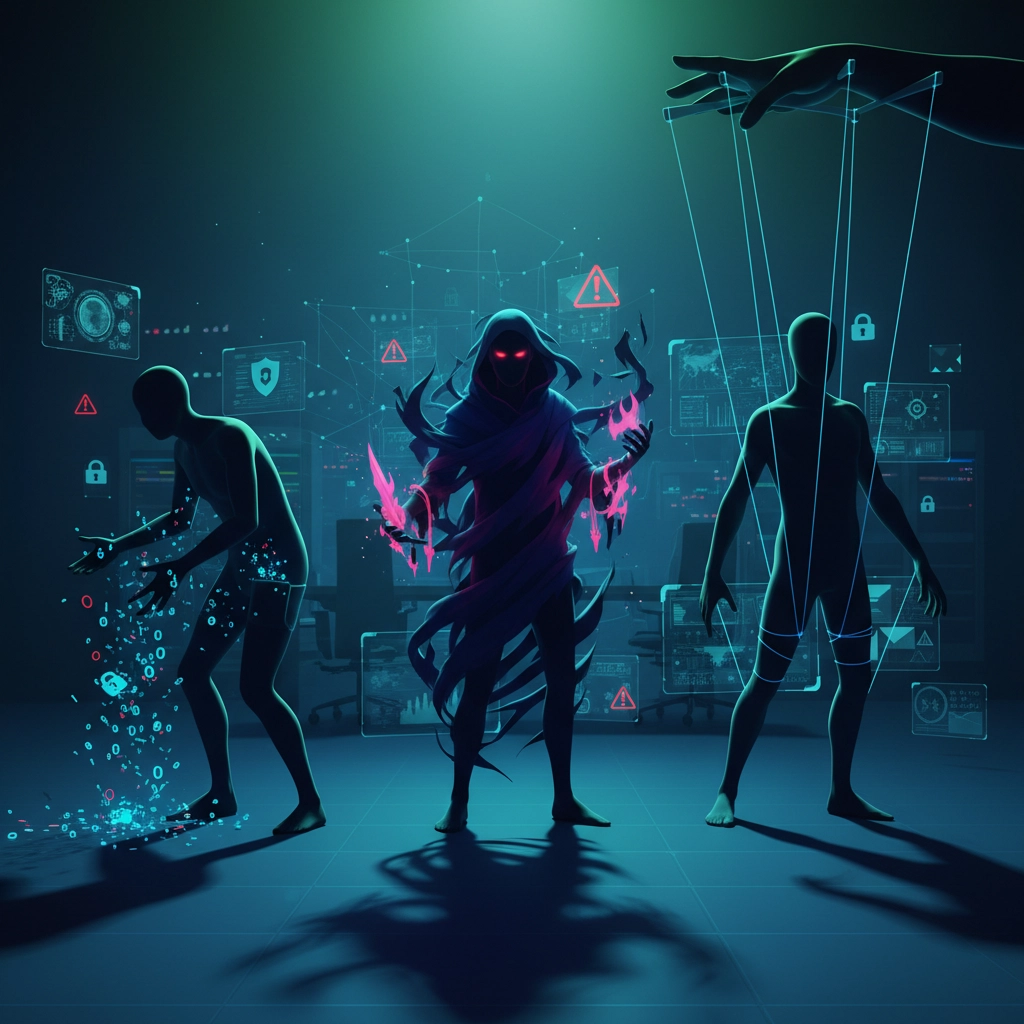Are Your Employees Your Biggest Cyber Risk? Here's the Truth About Human Factor Security
- Jahmar Childs
- Aug 30
- 5 min read
Here's a hard truth that most Chicago business owners don't want to hear: your biggest cybersecurity threat isn't some faceless hacker in a dark hoodie. It's Sarah from accounting who clicked on that "urgent" email, Mike from sales who uses "password123" for everything, or Lisa from HR who plugged in that USB drive she found in the parking lot.
The numbers don't lie—90% of cybersecurity breaches are caused by human factors, and 60% of data breaches stem from insider threats. Before you start questioning your hiring decisions, let's dive into why your employees have become your organization's weakest link and what you can do about it.
The Shocking Reality of Employee-Driven Cyber Incidents
If you think cybersecurity is just about having the latest firewalls and antivirus software, you're missing the biggest piece of the puzzle. According to Verizon's latest research, the human element is the common root cause of 68% of data breaches. That means for every three cyber incidents, two of them started with someone in your office making a mistake.
But here's what's even more alarming—these incidents are getting worse, not better. Insider threat incidents have jumped 47% since 2018, while the costs associated with these breaches have skyrocketed by 31% in the same timeframe. The average organization now faces $11.5 million in annual costs from insider threats alone.
For small and mid-sized businesses in Chicago, these statistics are particularly concerning. 61% of smaller companies don't have the resources to match the cybersecurity efforts of larger corporations, making them prime targets for cybercriminals who know exactly how to exploit human vulnerabilities.

The Many Faces of Employee Cyber Risk
Employee-related security risks come in more flavors than deep-dish pizza options in Chicago. Understanding these different types is crucial for protecting your business.
The Accidental Insider
This is your most common threat—well-meaning employees who simply make mistakes. They're not trying to hurt your business, but their actions can be just as devastating as a malicious attack. Common behaviors include:
Using weak passwords like "Chicago2024" or reusing the same password across multiple accounts
Falling for phishing emails that look legitimate but are designed to steal credentials
Clicking on malicious links or downloading infected attachments
Using outdated software with known vulnerabilities
Losing devices containing sensitive company data
The Disgruntled Employee
These are current or former employees who have legitimate access to your systems but use it inappropriately. Maybe they're unhappy about being passed over for a promotion, facing termination, or dealing with personal financial stress. Their motivations might include:
Financial incentives from competitors or cybercriminals
Revenge against the company or specific individuals
Simple opportunism when they realize they have access to valuable information
The Compromised Insider
Sometimes good employees become unwitting accomplices. Cybercriminals specifically target employees through social engineering, turning them into inside agents without their knowledge. This might happen through:
Sophisticated spear-phishing campaigns that compromise their personal accounts
Social media manipulation to gather information for targeted attacks
Phone scams where attackers impersonate IT support or executives

Why Technology Can't Solve the Human Problem
Here's where many Chicago businesses get it wrong—they think cybersecurity is purely a technology problem. You can have the most advanced firewalls, the best encryption, and military-grade threat detection systems, but none of that matters if someone hands over their login credentials to a fake "IT support" call.
The harsh reality is that strong security technology cannot prevent someone from clicking on a malicious link or using a weak password. Humans remain the unpredictable variable in even the most sophisticated security setup.
Think about it this way: you wouldn't leave your office doors unlocked just because you have a great alarm system. But that's essentially what happens when employees with legitimate access make poor security decisions—they're opening doors that your technology can't protect.
The Financial Impact on Chicago Businesses
The costs of employee-related security incidents go far beyond the initial breach. When a security incident occurs, organizations face:
Immediate Response Costs: The average time to identify and contain a data breach is 277 days, extending to 328 days when lost or stolen credentials are involved. During this time, you're paying for forensic investigations, legal fees, and emergency IT services.
Regulatory Penalties: Depending on your industry, you might face hefty fines for data protection violations. Healthcare organizations face HIPAA penalties, while financial services deal with strict regulatory oversight.
Business Disruption: Many companies can't operate normally during and after a breach, leading to lost revenue and productivity. For small businesses, this disruption can be fatal.
Reputation Damage: News of a security breach spreads quickly in Chicago's tight-knit business community. Rebuilding customer trust can take years and cost far more than the initial incident.
Increased Insurance Premiums: Cyber insurance rates continue to climb, especially for companies with a history of security incidents.

The Psychology Behind Employee Security Mistakes
Understanding why employees make security mistakes is key to preventing them. Several psychological factors contribute to risky behavior:
Overconfidence: Many people believe they can spot a phishing email or malicious website, leading them to let their guard down.
Time Pressure: Employees rushing to meet deadlines often skip security protocols, thinking they'll "just do it this once."
Authority Compliance: People are naturally inclined to follow instructions from perceived authority figures, making them vulnerable to social engineering attacks.
Habituation: The more security warnings employees see, the less attention they pay to them—a phenomenon known as "alert fatigue."
Personal Device Comfort: Employees often apply their casual personal device security habits to work situations, not realizing the different risk levels involved.
Building a Human-Centered Security Strategy
The good news is that employee cyber risk is manageable with the right approach. Here's how forward-thinking Chicago businesses are addressing the human factor:
Comprehensive Security Awareness Training
Gone are the days of annual, boring security presentations. Modern security training needs to be:
Ongoing and Interactive: Regular, bite-sized training sessions that keep security top-of-mind
Relevant and Current: Training that addresses the latest threats and tactics
Personalized: Different roles face different risks—accounting staff need different training than sales teams
Tested and Measured: Regular phishing simulations and security knowledge assessments
Zero-Trust Security Architecture
Instead of trusting employees by default, implement systems that verify every action:
Multi-factor authentication for all critical systems
Regular access reviews to ensure employees only have necessary permissions
Continuous monitoring of user behavior to detect anomalies
Automated systems that flag unusual activities for review
Clear Policies and Procedures
Employees can't follow security policies they don't understand or haven't seen. Ensure your policies are:
Written in plain English, not technical jargon
Easily accessible to all employees
Regularly updated to reflect current threats
Backed by clear consequences for violations

Creating a Security-First Culture
The most effective approach treats cybersecurity as everyone's responsibility, not just the IT department's problem. This means:
Leadership Commitment: When executives visibly prioritize security and follow the same rules as everyone else, it sets the right tone.
Open Communication: Employees should feel comfortable reporting security concerns or mistakes without fear of punishment.
Regular Recognition: Acknowledge employees who demonstrate good security practices or report potential threats.
Continuous Improvement: Use security incidents as learning opportunities rather than blame sessions.
The Path Forward for Chicago Businesses
Your employees don't have to be your biggest cybersecurity risk. With the right combination of training, technology, and culture, they can become your strongest defense against cyber threats.
The key is recognizing that cybersecurity isn't just about technology—it's about people. By investing in your employees' security awareness and creating systems that make it easy to do the right thing, you can dramatically reduce your organization's cyber risk.
Remember, cybercriminals are counting on human mistakes. Don't give them what they want. Instead, turn your workforce into a security asset that protects your business, your customers, and your future.
The question isn't whether your employees are a cyber risk—they are. The question is what you're going to do about it. The businesses that thrive in 2025 and beyond will be the ones that answer that question with action, not excuses.
Schedule your free IT risk assessment today and discover how to transform your biggest cybersecurity weakness into your strongest defense.
Comments